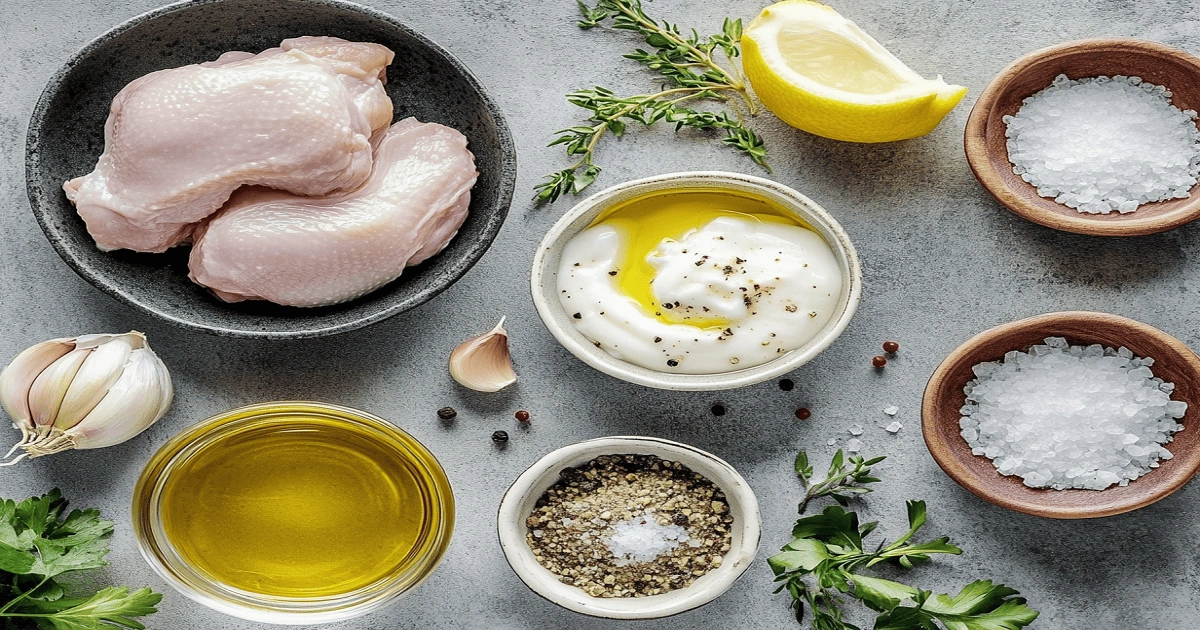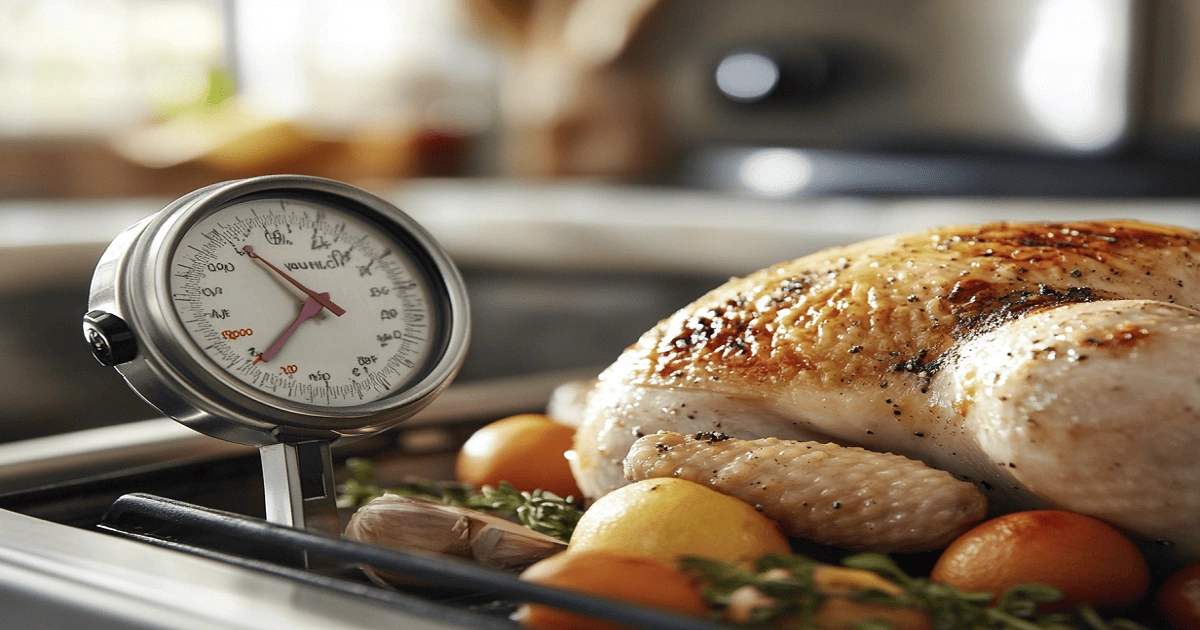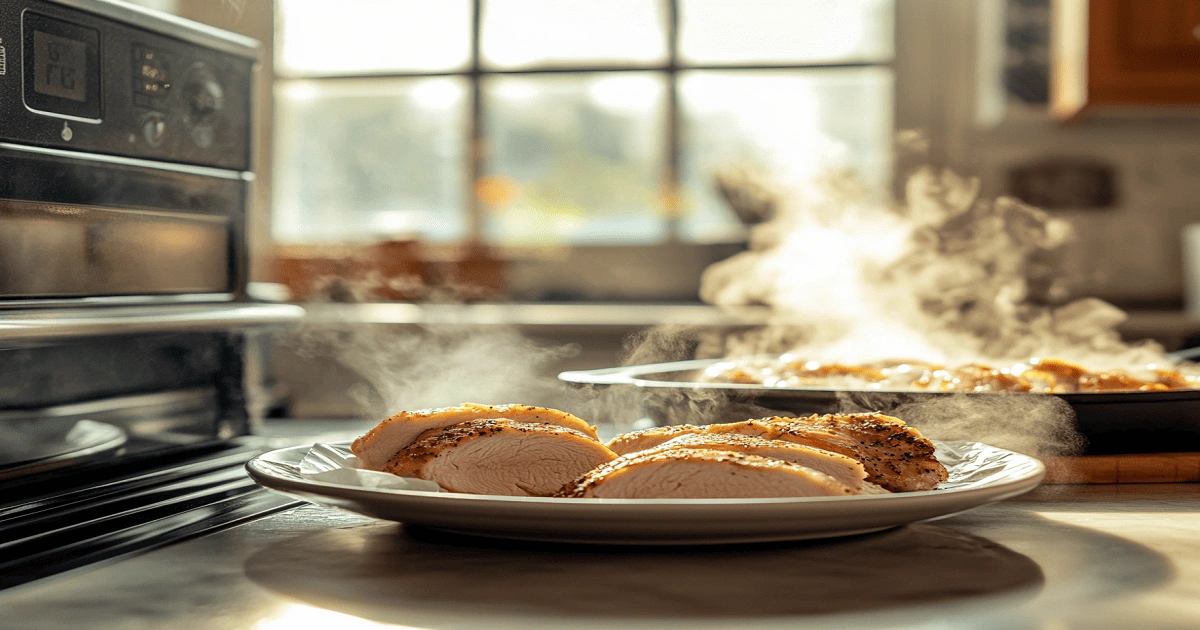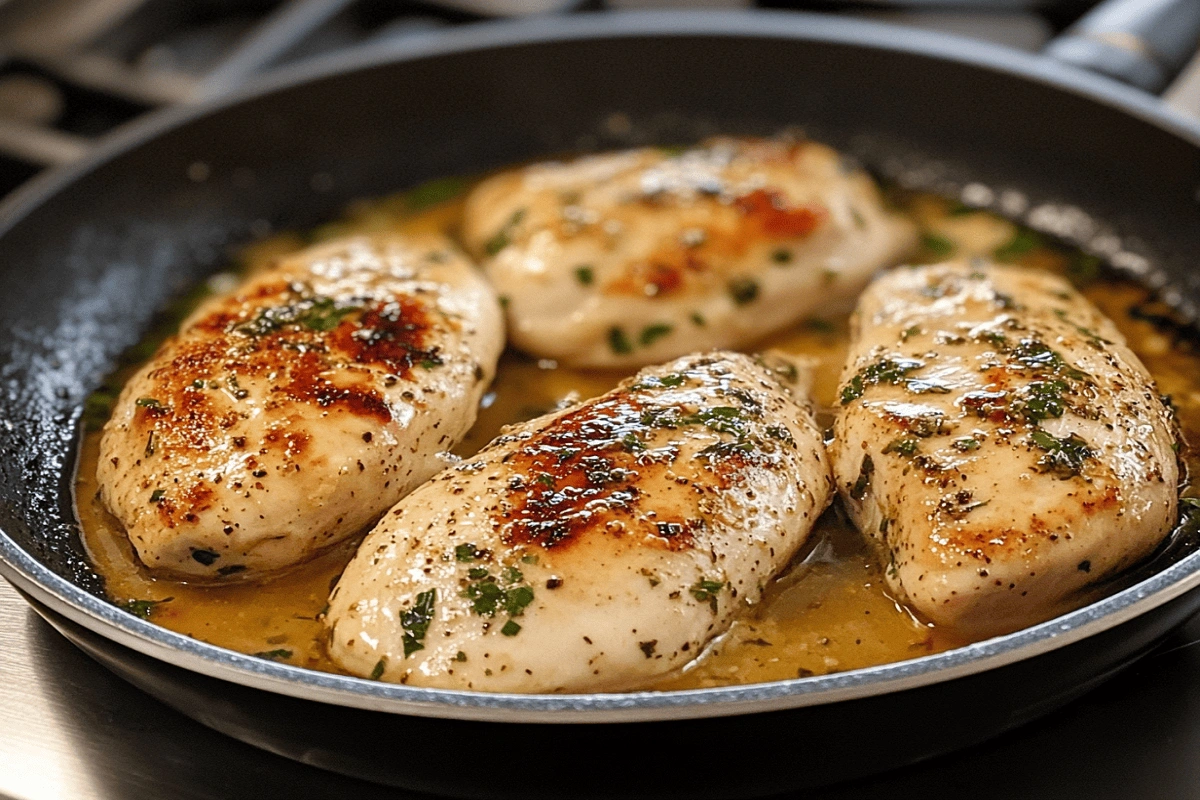✅ Introduction: Why Chicken Breast Turns Tough (and How to Fix It)
On the surface, cooking chicken breast seems easy. It’s lean, quick, and widely used in everyday meals. Yet despite its simplicity, many home cooks still find themselves asking: how do you cook chicken breast so it is not tough? It’s a question that resonates in households far and wide—and for valid reasons.
If you’ve ever pulled a pan from the stove only to cut into something dry, rubbery, or disappointingly bland, you’re not alone. Chicken breast has a reputation for being unforgiving when handled improperly, but that doesn’t mean it can’t be mastered.
This all-in-one guide lays out the precise actions to sidestep those frequent mistakes. If you’ve ever wondered how do you cook chicken breast so it is not tough?, you’re in the right place. From prepping your chicken the right way to cooking it with care and slicing it for maximum tenderness, you’ll learn how to turn this everyday cut into something truly satisfying. It’s time to stop guessing—and start cooking chicken breast the right way.
Why Does Chicken Breast Turn Tough?
If you’ve asked how do you cook chicken breast so it is not tough, it’s probably because you’ve experienced that stringy, chewy texture yourself. Here’s why it happens:
-
Overcooking: Chicken breast is lean and dries out fast beyond 165°F (74°C).
-
Uneven Thickness: One part cooks faster, the other undercooks.
-
No Brining or Marinating: The muscle fibers remain tight and unflavored.
-
Incorrect Slicing: Cutting the wrong way can affect texture.
-
Lack of Resting Time: Juices escape too quickly if you slice too soon.
👉 Learn more about why chicken gets tough in a slow cooker and how to prevent it.
To eliminate these issues, follow the 10 core steps below.
1. Start with High-Quality Chicken
The journey to juicy, tender chicken breast begins long before it hits the pan. It starts with choosing the right cut. High-quality chicken not only tastes better but also cooks more evenly and holds moisture more effectively.
Look for these signs of quality:
-
Bright, light pink meat free from any grayish or lackluster spots.
-
A clean scent—never sour or “off”
-
No added sodium, water solutions, or preservatives
-
Uniform thickness and shape for even cooking
Whenever possible, buy fresh, never-frozen chicken breasts from a reputable source. Freezing can affect texture, and added solutions can make it harder to control flavor and moisture. Choosing well at the store sets you up for success in the kitchen.
2. Brining Prevents Dryness
If you’re wondering how do you cook chicken breast so it is not tough?, Soaking in a brine is among the most powerful methods available. It keeps the meat moist, flavorful, and tender.
How to brine:
-
Combine 4 cups of chilled water with ¼ cup of kosher salt.
-
Let the chicken breast soak for 30 to 60 minutes, fully covered in the liquid.
-
Rinse and pat dry.
This step is crucial if you’re serious about figuring out how do you cook chicken breast so it is not tough.
👉 This trick works even better when paired with these expert tips on making chicken thinner for juicy, even results.
3. How Do You Cook Chicken Breast So It Is Not Tough? Start by Marinating for Flavor and Tenderness
Brines add moisture, but marinades bring flavor and tenderization. A marinade with acidity (like lemon juice or yogurt) breaks down proteins and softens muscle fibers.

Great marinade base:
-
½ cup plain yogurt
-
2 tablespoons olive oil
-
1 tablespoon lemon juice
-
1 teaspoon garlic powder
-
Salt and pepper to taste
Let it sit in the fridge for 1 to 12 hours.
💡 Use a glass container or zip-top bag for best results.
4. Even Out Thickness With a Meat Mallet
Uneven chicken breast leads to uneven cooking. Pound the thick part until it matches the thin part.
How to do it:
-
Place chicken between two sheets of plastic wrap.
-
Use a meat mallet or rolling pin.
-
Aim for ½ inch uniform thickness.
This ensures consistent internal temperature, which is critical when learning how do you cook chicken breast so it is not tough.
5. Use a Meat Thermometer Every Time
A thermometer takes the guesswork out of cooking. Internal temperature is everything.
-
Insert thermometer into the thickest part.
-
Remove chicken at 160°F (it will rise to 165°F as it rests).
-
Avoid overcooking at all costs.

6. Choose the Right Cooking Method
🔥 Grilling:
-
Medium heat
-
5–6 minutes per side
-
Baste with oil or marinade
🍳 Pan-Searing:
-
Medium-high heat
-
Sear 2–3 minutes per side
-
Finish in oven for 5–10 minutes
🥣 Poaching:
-
Add chicken to cold broth or water
-
Heat to a gentle simmer
-
Cook 12–15 minutes
Each method works if executed correctly—but overcooking is the enemy. If you’re still asking how do you cook chicken breast so it is not tough, focus on technique over time.
7. Rest the Chicken After Cooking
After taking the chicken off the heat, giving it time to rest is crucial. This pause allows the juices to settle back evenly into the meat, enhancing tenderness and flavor. Cutting into it too early will cause the juices to escape, resulting in a drier texture..
Tip:
Allow the chicken breast to sit undisturbed for 5 to 10 minutes before slicing. Lightly tent it with foil to keep it warm without steaming it.
8. Slice Against the Grain
How you slice matters. Muscles run in one direction—cut across those fibers.
-
Lay the breast on a board.
-
Locate the grain of the meat—the long muscle fibers running in one direction
-
Slice perpendicular to that.
You’ll notice a softer texture with every bite. If you’re wondering how do you cook chicken breast so it is not tough, this step is non-negotiable.
👉 Not sure how to cut properly? Here’s a step-by-step guide to thinly slicing chicken breast.
9. Keep Moisture In With Oils and Liquids
When cooking, certain ingredients help seal in the chicken’s natural juices and enhance flavor.
-
Olive oil rubs coat the surface and prevent sticking.
-
Butter basting keeps the top layer glossy and moist.
-
Vegetables like onions or tomatoes release steam during cooking, creating a self-basting effect.
These simple additions can be the difference between a dry dish and one that’s irresistibly juicy.
👉 Try these secrets to moist chicken breast to enhance flavor and tenderness.
10. Reheat Gently, Not Aggressively
Toughness doesn’t end after cooking. It can creep in during reheating too—especially if you blast it with high heat.

Smart reheating methods:
-
Microwave: Add a damp paper towel and use 50% power
-
Oven: Wrap with foil and warm at 275°F for 10 to 15 minutes.
-
Skillet: Pour in a small amount of water or broth, then cover the pan with a lid.
This avoids rubbery leftovers and helps maintain a tender bite.
👉 Still have leftovers? Here’s how long cooked chicken lasts and how to store it safely.
🔄 How Do You Cook Chicken Breast So It Is Not Tough? Quick Recap
Let’s summarize everything you’ve learned:
| Step | Action |
|---|---|
| ✅ | Use high-quality, fresh chicken |
| ✅ | Brine before cooking |
| ✅ | Marinate with acid-rich ingredients |
| ✅ | Flatten for even thickness |
| ✅ | Use a thermometer for precision |
| ✅ | Choose the correct cooking method |
| ✅ | Rest before slicing |
| ✅ | Slice against the grain |
| ✅ | Lock in moisture with oils/liquids |
| ✅ | Reheat gently with moisture |
❓ Frequently Asked Questions
How do you cook chicken breast so it is not tough when grilling?
To avoid chewy chicken on the grill, always start by flattening the chicken breast to ensure even thickness. Heat your grill to medium and position the chicken right above the flame. Cook each side for 5–6 minutes and remove the meat once it reaches 160°F internally. Let it sit for about 5 minutes before slicing to help retain its natural juices.
How do you cook chicken breast so it is not tough in the oven?
Baking chicken breasts requires a bit of moisture control. Set the oven to 375°F and loosely tent the chicken with foil to lock in the steam. Bake for 20–25 minutes and use a meat thermometer to check for doneness—165°F is your goal. Allow the meat to rest before slicing to avoid losing its natural juices.
How do chefs keep chicken breast tender?
Professional chefs often marinate or brine the meat, pound it flat for even cooking, and use precise temperature control methods like sous-vide or digital thermometers to ensure perfect doneness.
Why is my chicken breast always tough, even when I follow recipes?
You may be skipping key steps like brining, flattening, or resting the meat. Also, even slightly overcooking chicken—by as little as 5 degrees—can lead to dryness. Using the right slicing method can significantly impact the final result.
👉 Discover more ways to keep chicken breasts moist when pan-frying or reheating.
📝 Final Thoughts: How do you cook chicken breast so it is not tough?
If you’re still asking yourself how do you cook chicken breast so it is not tough, the truth is simple—tender, juicy chicken isn’t a mystery. It doesn’t rely on expensive gadgets or chef-level expertise. It comes down to thoughtful preparation, a little kitchen awareness, and consistency. That’s it.
You don’t need a sous-vide machine, a cast iron skillet, or a culinary degree. What you do need is the willingness to slow down, follow the right steps, and respect the cooking process. Tender chicken is the reward of those small, smart choices.
Start with high-quality meat. Take the time to brine or marinate it. Ensure it’s evenly pounded, cooked gently to temperature—not beyond—and allowed to rest before slicing.
Chicken breast isn’t just easy to work with—it’s also packed with lean protein, essential vitamins, and minerals. It’s a great option for anyone focused on balanced eating. 👉 Check out the complete chicken nutrition facts here to understand just how beneficial this versatile ingredient really is.
With these steps in your back pocket, you’ll not only improve your meals, you’ll build confidence in the kitchen. No more guessing. No more rubbery dinners. Just tender, flavorful chicken breast—every single time.
And soon, you won’t be as.king how do you cook chicken breast so it is not tough anymore—you’ll already know the answer.

